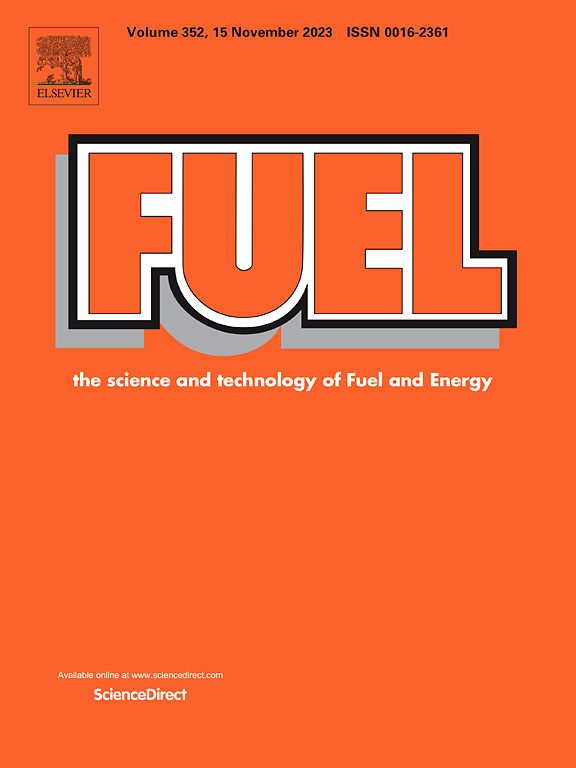Microfluidics study of free fall and forced gravity drainage in single- and multi-block fractured porous media: Implications on matrix-fracture interactions
IF 6.7
1区 工程技术
Q2 ENERGY & FUELS
引用次数: 0
Abstract
Naturally fractured reservoirs are of significant importance in global oil production. One of the main production mechanisms from these reservoirs is gravity drainage. Previous researches have focused on understanding the effective factors on the oil recovery from blocks and the degree of capillary continuity (block to block interaction). However, the results from these studies have not been consistent in some cases and there are ambiguities in the influence of some of the effective parameters on the dynamic discharge of oil from the matrix block. The purpose of the present study is to comprehensively investigate the impact of the main affecting parameters on oil recovery from the fractured porous media with the implications on the degree of capillary continuity through analysis of the stability of the oil bridges, along with addressing the reason of reported inconsistencies in previous studies. With this aim microfluidics experiments on a realistic rock-based single-block and three-block systems are performed and different parameters including the tilt angle of the blocks, injection rate and aperture of the transverse fracture are investigated. In addition, the realistic approach of aging micromodels allowed to examine the effect of degree of oil-wetness on capillary continuity in different multi block systems, an aspect that had not been explored in previous studies. In the case of multi-block systems, the location, number and stability of the formed liquid bridges and the effect on capillary continuity were examined. It was found that oil recovery from single block decreases at higher tilt angles, while in multi-block systems different trends are observed based on the range of injection rate which is attributed to the number and stability of formed liquid bridges. It was also found that in multi-block systems the increase in injection rate can establish capillary continuity through forming liquid bridges. Furthermore, new analytical relationships are developed in the case of single block porous media under free fall gravity drainage, to predict the downward flow of the liquid level within the fracture and matrix. The findings of this study can be used for enhancing the performance of gas injection strategies in fractured systems.
单块和多块裂缝性多孔介质中自由落体和强迫重力排水的微流体研究:对基质-裂缝相互作用的影响
天然裂缝性油藏在全球石油生产中占有重要地位。这些储层的主要生产机制之一是重力排水。以往的研究主要集中在了解影响区块采收率的因素和毛管连续性(区块间相互作用)的程度。然而,这些研究的结果在某些情况下并不一致,并且在一些有效参数对基质区块动态排油的影响方面存在模糊性。本研究的目的是通过对油桥稳定性的分析,全面探讨主要影响参数对裂缝性多孔介质采收率的影响,以及对毛细连续性程度的影响,并解决以往研究报告不一致的原因。为此,在实际岩石单块和三块系统中进行了微流体实验,研究了块体倾角、注入速率和横向裂缝孔径等不同参数。此外,老化微观模型的现实方法可以检验不同多区块系统中油润湿程度对毛细血管连续性的影响,这是以往研究中没有探索的一个方面。在多块体系的情况下,考察了形成液桥的位置、数量和稳定性以及对毛细管连续性的影响。研究发现,在倾斜角度较大时,单区块的采收率降低,而在多区块体系中,不同注入速率范围的采收率变化趋势不同,这与形成的液桥数量和稳定性有关。在多块体系中,增加注入速度可以通过形成液桥来建立毛细管连续性。在自由落体重力排水单块多孔介质的情况下,建立了新的分析关系,以预测裂缝和基质内的液位向下流动。该研究结果可用于提高压裂系统注气策略的性能。
本文章由计算机程序翻译,如有差异,请以英文原文为准。
求助全文
约1分钟内获得全文
求助全文
来源期刊

Fuel
工程技术-工程:化工
CiteScore
12.80
自引率
20.30%
发文量
3506
审稿时长
64 days
期刊介绍:
The exploration of energy sources remains a critical matter of study. For the past nine decades, fuel has consistently held the forefront in primary research efforts within the field of energy science. This area of investigation encompasses a wide range of subjects, with a particular emphasis on emerging concerns like environmental factors and pollution.
 求助内容:
求助内容: 应助结果提醒方式:
应助结果提醒方式:


